8 Rules for Using Commas Correctly! ESLBUZZ
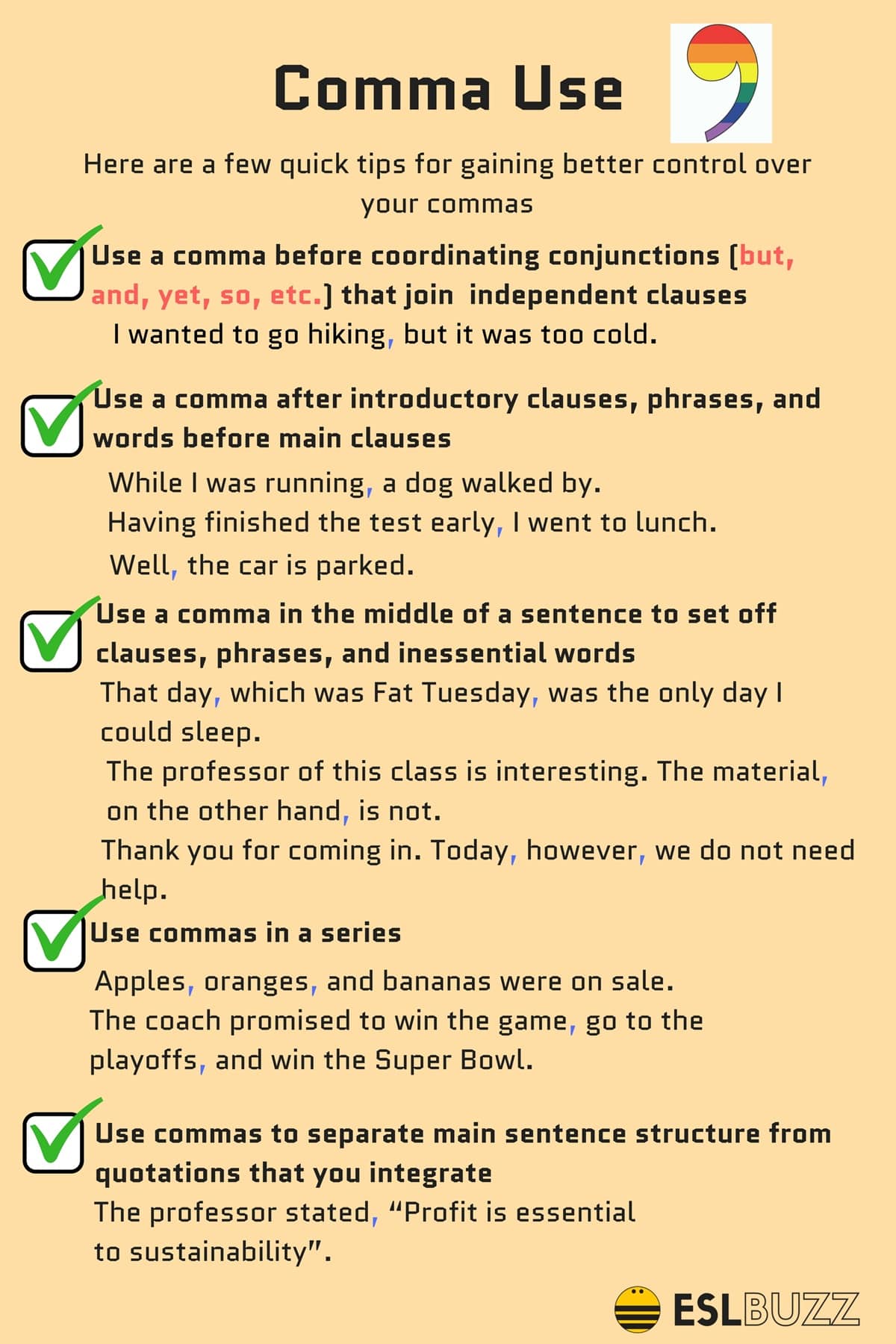
Much casual writing now uses comma that way, creating confusion about commas after FANBOYS. But long-standing editorial practice in polished writing and Hodges Harbrace rule 13b both seem very clear about avoiding comma after "So" at the beginning of a sentence, after a semicolon, or after a comma.
Studyladder, online english literacy & mathematics. Kids activity games, worksheets and lesson
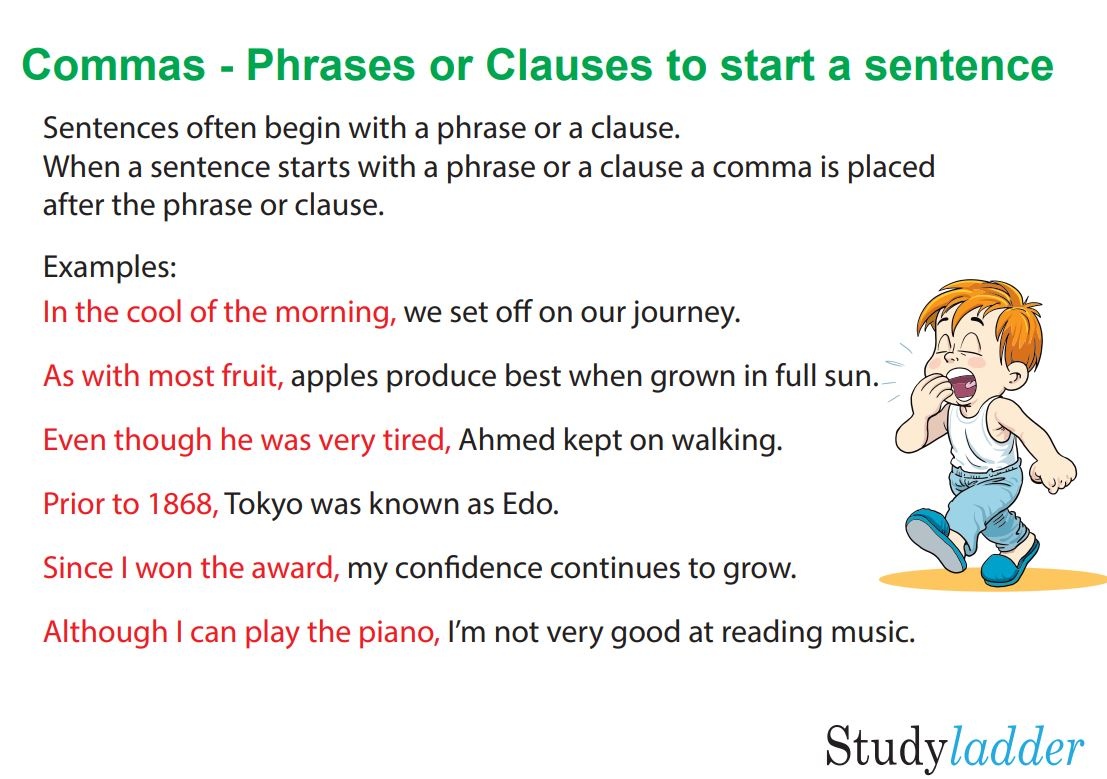
I feel like if I use "since" at the beginning of a sentence, p. Stack Exchange Network Stack Exchange network consists of 183 Q&A communities including Stack Overflow , the largest, most trusted online community for developers to learn, share their knowledge, and build their careers.
When to use a comma correctly in a sentence? Literary English

The comma goes between the introduction and the subject and must not separate the subject from the verb. Introductory elements often consist of prepositional phrases, subordinating conjunctions, participial phrases, or conjunctive adverbs. Phrases that begin with the following words often require a comma if they begin a sentence (this list is.
Sentences with Comma, Comma in a Sentence in English, Sentences For Comma English Grammar Here
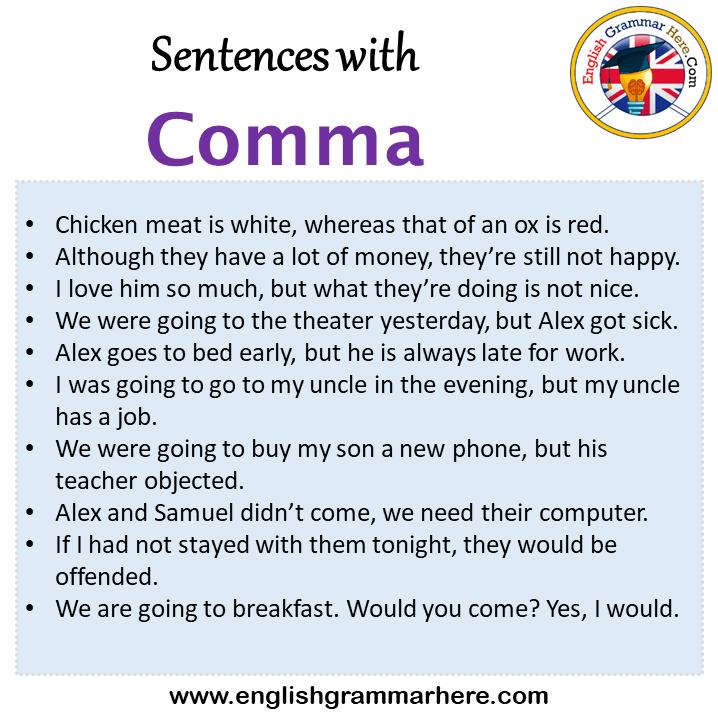
This form of since does not need a comma. We can also use since as a subordinating conjunction to mean because. This is where the comma rule gets tricky. We only use a comma before since if the preceding clause is negated by the new clause. A good rule of thumb is if the preceding clause contains a negative verb, use a comma.
When do we need to put a comma after "so" at the beginning of a sentence? (6 Solutions!!) YouTube

"Then" is mostly used as a temporal adverb, so including a comma after "then" is unnecessary since it breaks up the sentence needlessly. When "then" is used as an adverb at the beginning of the sentence, however, a comma should be introduced following it. A comma after "then" is also necessary when it is preceded by a semicolon.
Comma Rules Comma Definition & Examples for ESL Learners ESL Grammar
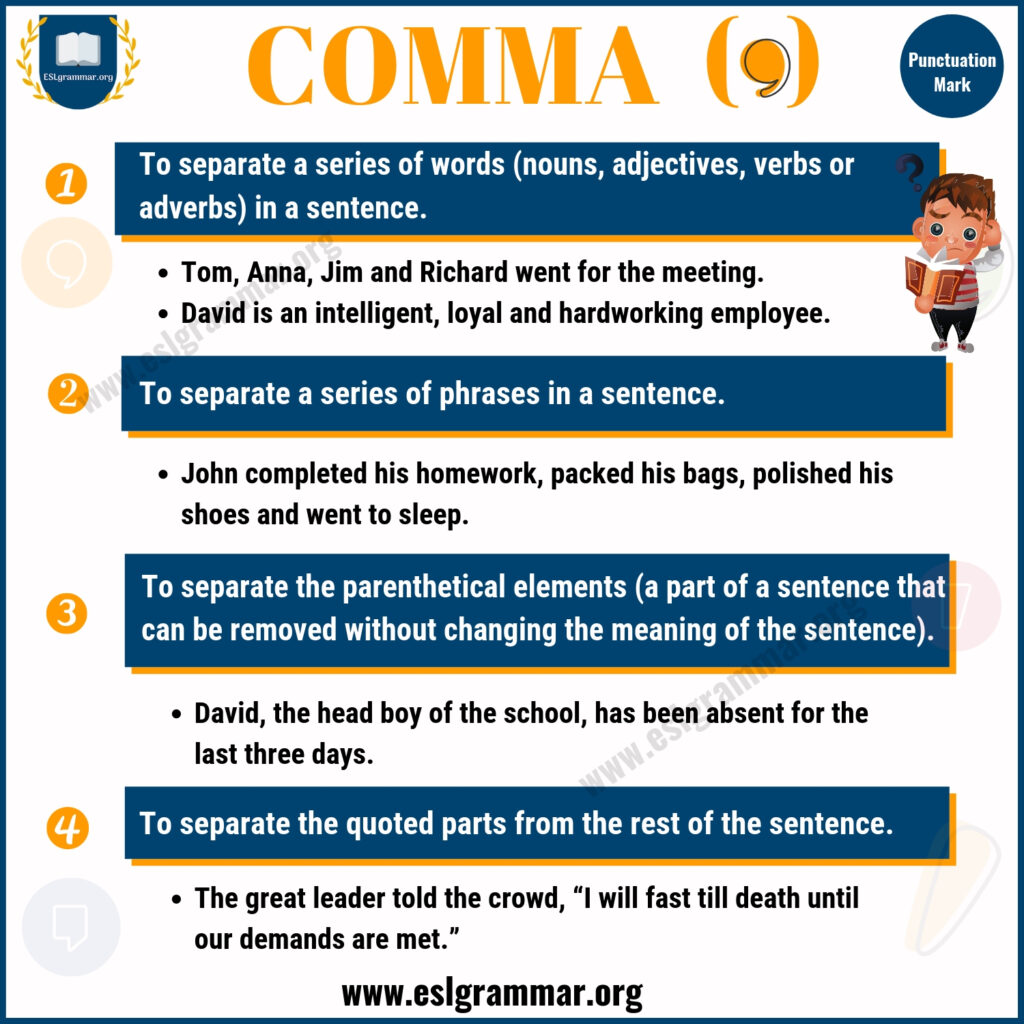
A. Punctuation is not so simple that you can make a rule that a comma "always" follows a given word or phrase. Commas depend on syntax as well as pacing, tone, and personal preference. Two examples with next : Next comes the scene where he buries the toenails. Next, since he was still breathing, she worked a crossword puzzle.
Commas With 'In the beginning', 'At first', 'At the Start', etc.
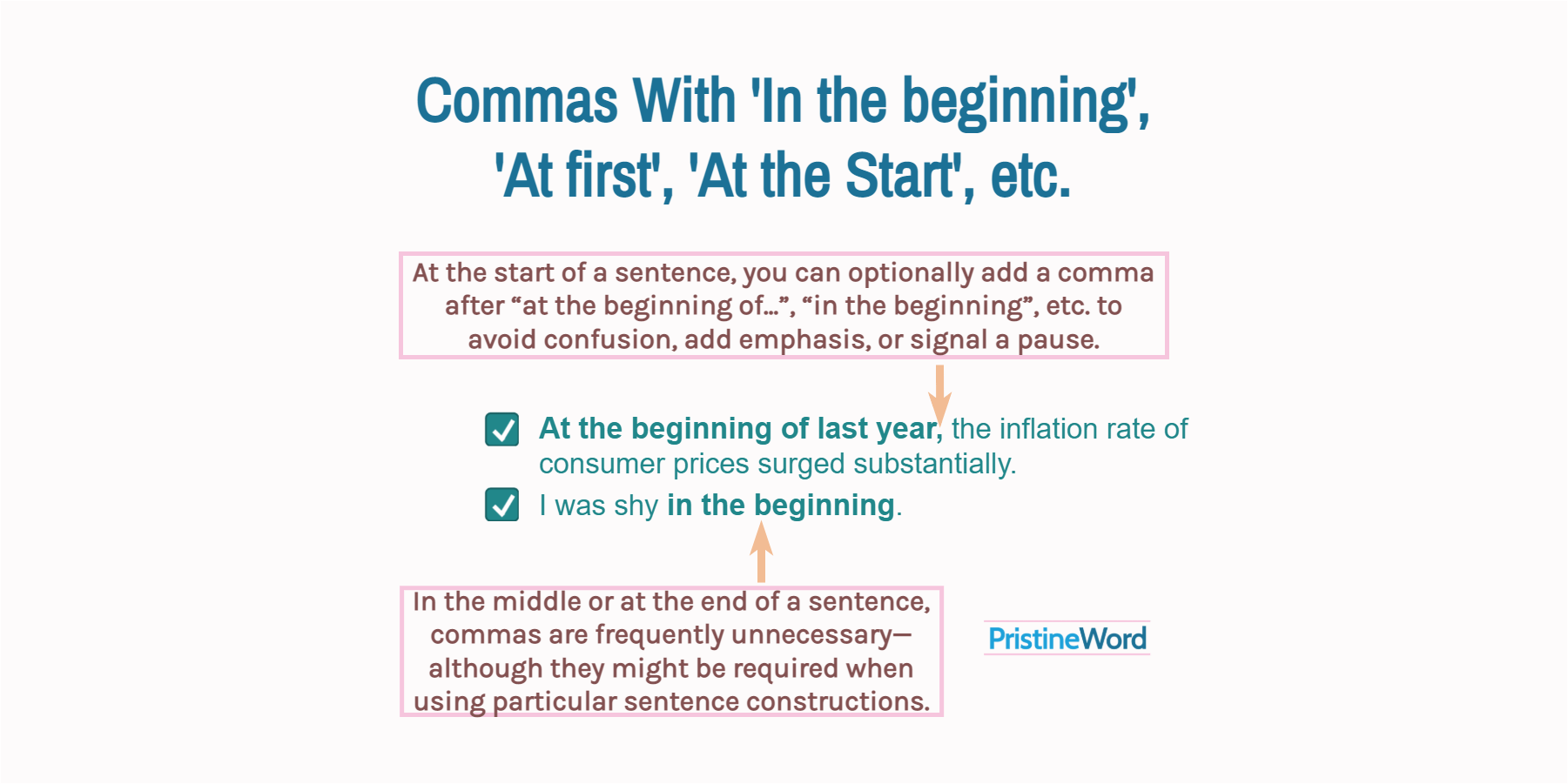
An exception to the rule. As with many other rules in English grammar, the comma-after-introductory-clauses rule comes with an exception. When the introductory clause is short, the comma may be omitted as a matter of style. See the example below: Grabbing her umbrella, Kate raced out of the house. Grabbing her umbrella Kate raced out of the house.
Comma Rules And Examples Riset
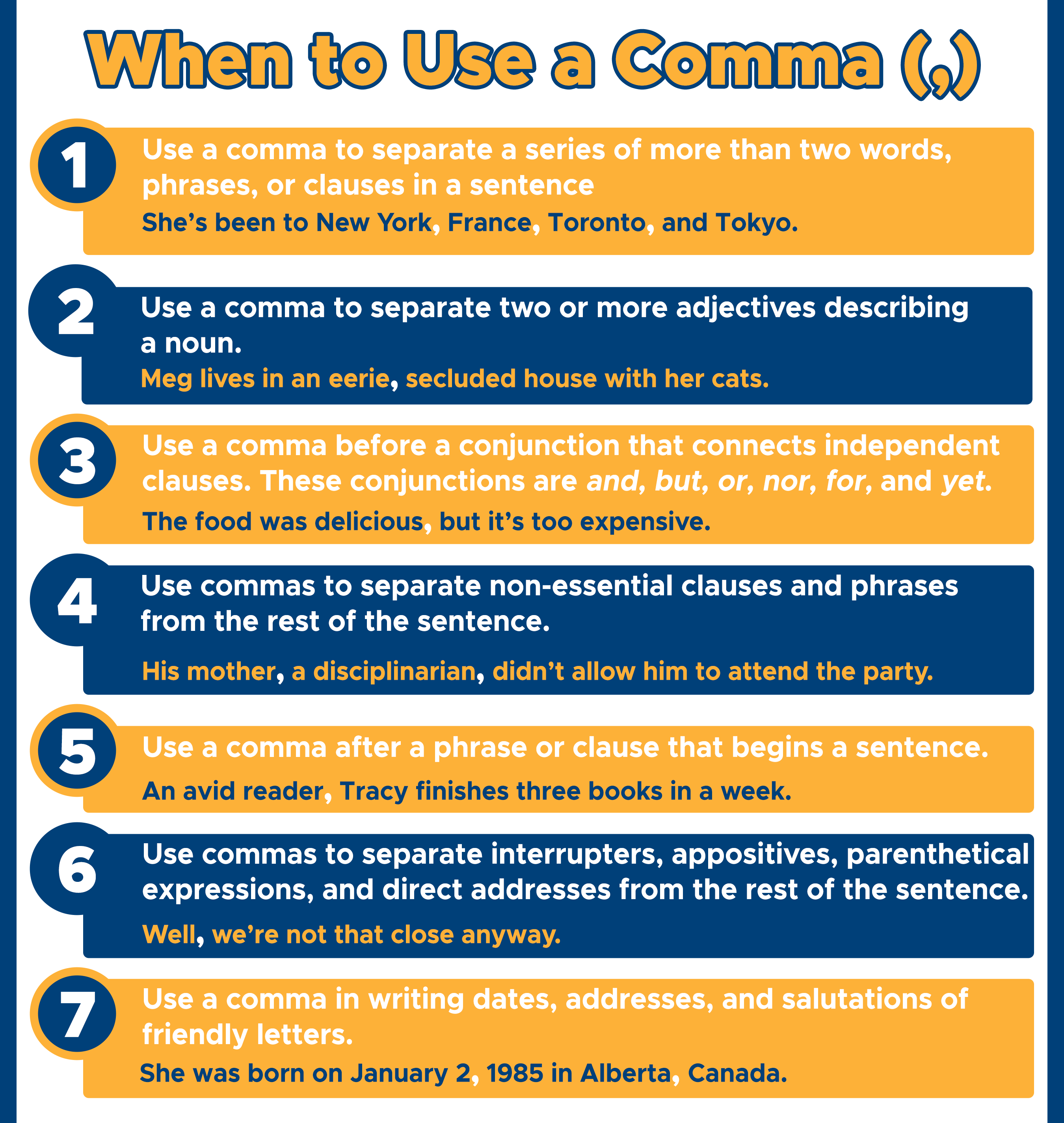
The way I see it, it can't work as an adverb at the beginning of a sentence with a comma after it. I haven't been there since. Since, I haven't been there. As a conjunction: Since you won't do it, you will not get money for it. I also wonder if the word "after" can be an adverb at the beginning of a sentence.
Commas with Dates and Time Intervals
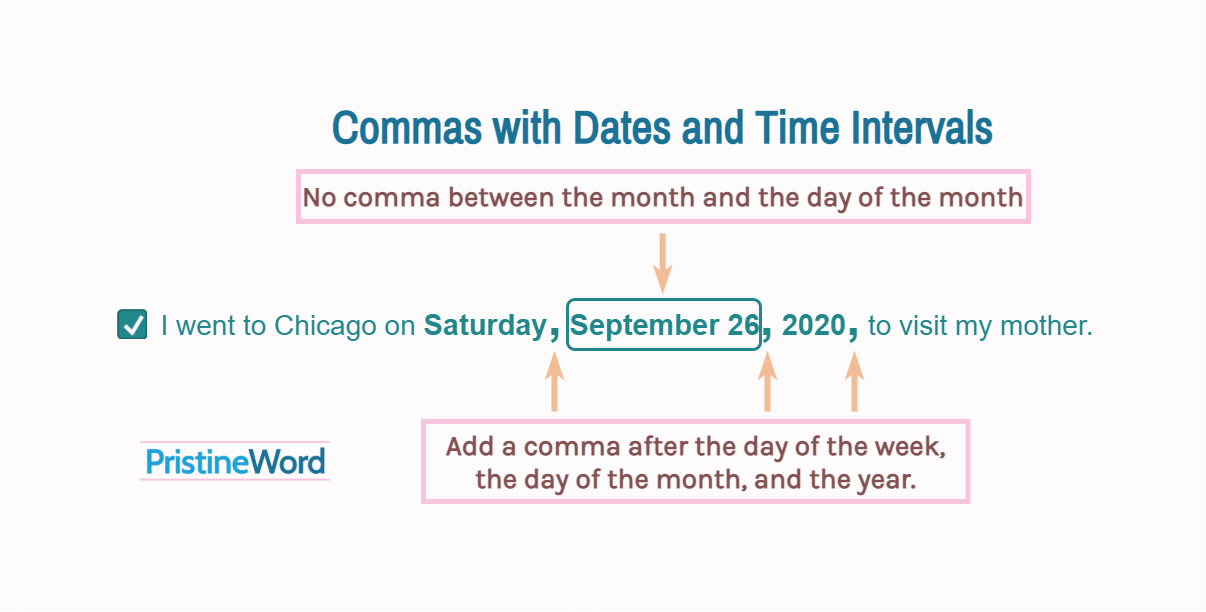
Common subordinating conjunctions include because , while , since , when , until, and unless. Now, here's the rub. If you are being absolutely, technically correct, a comma should be used to separate two clauses when the clause begun by the subordinating conjunction comes first. Correct: Because/Since the city's government has curtailed.
When to Use a Comma Before or After Parenthesis in Writing

And, never use a comma with any other subordinating conjunction other than because. When since is being used to replace the word because, only place a comma before it if the preceding clause is negated by the new clause. Since is a very versatile word that can be used in many ways. However, only some of its uses require a comma.
Comma (,) When to Use a Comma with Important Comma Rules • 7ESL Comma rules, When to use

At the beginning of the month I started learning Japanese. In case of doubt, use a comma since it will probably help readers understand the meaning of the sentence. At first, Olivia resisted and said no to him because she didn't know what to say. Be aware, on the other hand, that phrases of similar importance should be separated by commas.
Punctuation When to use a Comma Teaching writing, English writing skills, Writing skills

Also, when we have a prepositional phrase in the middle of the sentence, we must have two commas before and after it. Look: Since birth, he had gorgeous eyes.. When we use 'since' at the beginning of the sentence, we must put a comma between the two clauses. 'Since' as an Adverb. As it was stated, one of the functions of 'since' is an adverb
Comma English4Today

Since - English Grammar Today - a reference to written and spoken English grammar and usage - Cambridge Dictionary
How To Use SINCE in English, Definition and Example Sentences We use SINCE to talk about a point

Commas with Introductory Phrases. Commas almost always follow phrases at the beginning of sentences; use the comma to separate the phrase from the independent clause. This means use a comma after a participial phrase, an absolute phrase, an infinitive phrase, and a prepositional phrase. There is some leeway with prepositional phrases.
Commas With 'Therefore', 'Hence', 'Consequently', 'Thus', etc.
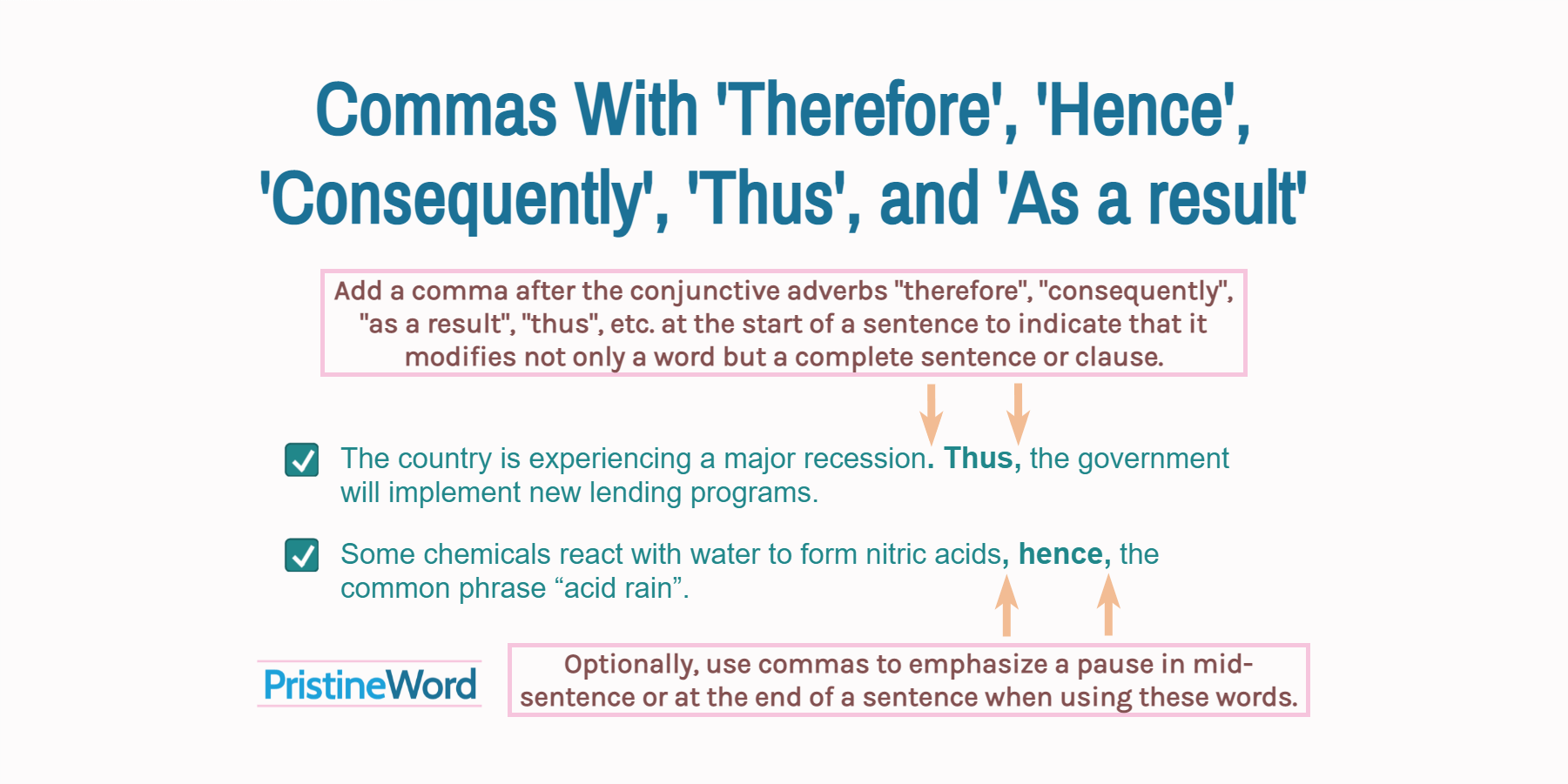
As, because or since ? - English Grammar Today - a reference to written and spoken English grammar and usage - Cambridge Dictionary
The Use of Commas Rule 1 To

There is a subtle difference between since and because, however: since expresses a milder degree of causality than because does. Since doesn't get all the ire. The conjunctive as gets dumped on even more. The conjunction as has a number of meanings and uses, including both one that marks time ("We had dessert as we watched TV") and.